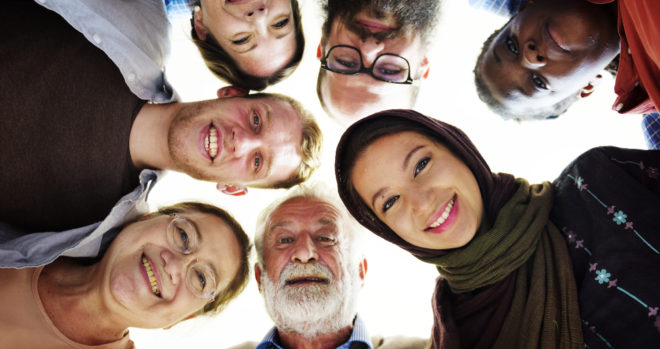From advocacy groups to physicians, caregivers to nurses, everyone is working with one vision: to improve the lives of patients. And that’s why working together is key.
Indeed, using education and awareness to drive positive change for patients, is at the heart of the acute myeloid leukemia community at a time when many new therapies are revolutionizing the treatment landscape.
From Lab to Clinic
As Dr. Gwen Nichols Chief Medical Officer of The Leukemia & Lymphoma Society (LLS) notes: “For many years we have used the same combinations of drugs to treat AML, but we said we need to do better,” explaining that scientific understanding of AML has increased drastically in recent years. “We want to make sure everything we have been learning about the biology of AML actually benefits patients.”
LLS leads a collaborative clinical trial – Beat AML Master Trial – testing several novel targeted therapies for patients with acute myeloid leukemia, which has required a huge amount of collaboration with a wide range of stakeholders.
LLS has had to work extremely closely with fellow advocacy groups, pharmaceutical companies and the FDA, to name but a few.
“We think we are the right people to lead and convene this because we put the patient first. Our long history of supporting research means we have relationships with investigators and pharmaceutical companies,” says Dr. Nichols.
Responding to Changing Needs
Kathleen Weis, Chief Executive Officer of the Aplastic Anemia and MDS International Foundation (AAMDS), explains that a constant feedback loop is the best way to ensure changing educational needs are met.
“The goal is always to help people learn about AML. We want to empower patients so they are confident and comfortable to have conversations with their healthcare provider and to navigate the system,” says Kathleen, adding: “We also do a lot of work with caregivers to ensure they are receiving the support that they need because they are critical to the patient journey.”
At a time when new discoveries and treatments are expanding the conversation around living with AML, flexibility is particularly important. The feedback loop also gives advocacy groups a meticulous understanding of patient needs that can feed into research and development.
Global Collaboration
There’s a lot to be said for working together – and nothing says it louder than Know AML, a collaboration on a global scale.
Gary Nolan, Know AML secretariat representative, and Brian Tomlinson, Know AML patient advocate ambassador and Chief Program Officer at CancerCare, say the program has brought patients, advocacy groups, nurses, doctors and researchers from around the world together under one flag.
“The mission is to drive awareness and education, to raise awareness of the resources and support available, and facilitate education from a global perspective. To identify the unmet need and respond to that,” says Gary.
It is led by a panel of ambassadors, like Brian, who meet regularly to discuss what’s needed globally. They then work with Know AML facilitators to fulfill that need. Once materials are developed, they are available for the worldwide network of advocacy groups to use. It means less duplication, fewer resources and a more streamlined education pipeline – all extremely important in a world of fast and furious discovery.
“Know AML has been built by the community for the community,” says Brian. “The ambassadors drive the agenda to review resources and materials, but it is the patients who are at the center.”
